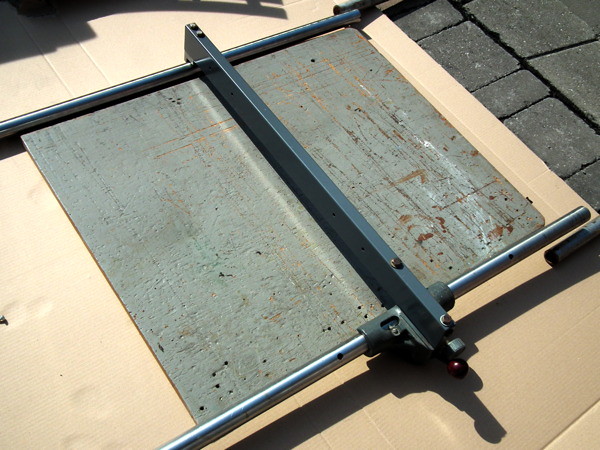- Joined
- Aug 3, 2017
- Messages
- 2,437
I dislike the thin kerf blades when you have enough power to run full kerf. Thin kerf blades tend to wonder a bit and give you a less flat surface when cutting at depth.
I have an older Dewalt jobsite tablesaw,...
My purpose for a tablesaw has been primarily to rip sheet goods.
t doesn't seem like you need an upgrade
You're saying you prefer the Jet-Lock style of fence with the round tubes? Like this:I have done my fair share of cabinet work. I can’t understand all the love that goes around for the Unifence and the like. I’m talking about the rip fence that only clamps on the operator side of the saw. Ie: if you are trying to cut an awkward piece of sheet goods. You will more than likely push on the outer end of the rip fence AND IT WILL FLEX because it is not clamped down. It will flex with any pushing…enough said. I personally will only use the older style Delta rip fence that clamps at both ends. When clamped down it’s rock solid…my 3 cents.
 Fence_01 by Craig T, on Flickr
Fence_01 by Craig T, on FlickrYou're saying you prefer the Jet-Lock style of fence with the round tubes? Like this:
Fence_01 by Craig T, on Flickr
Pretty much any fence can be made to work. With the Jet-Lock, they do secure at both ends...but it is easy to lock the fence out of parallel with the blade.
With the Unifence (or really, any fence), you should not need to apply a lot of sideways pressure to the work as it going through the cut. Just enough to keep it up against the fence. What sideways pressure is applied should be just before the leading edge of the blade (like with a feather board)--never further back since this can push the offcut side into the blade with dangerous results!
Craig
PS I sold my Jet-Lock fence several years ago.
If the fence is properly tuned up. You will have the front clamp first and that will also square the fence. Then, as you clamp more down, the rear clamp will tighten. I have no problem will parallel…never. I push the offcut (as you call it) all the time against the fence. It’s not dangerous, if you know what you are doing. I don’t like kerf gouging and burning. Good Luck…DaveYou're saying you prefer the Jet-Lock style of fence with the round tubes? Like this:
Fence_01 by Craig T, on Flickr
Pretty much any fence can be made to work. With the Jet-Lock, they do secure at both ends...but it is easy to lock the fence out of parallel with the blade.
With the Unifence (or really, any fence), you should not need to apply a lot of sideways pressure to the work as it going through the cut. Just enough to keep it up against the fence. What sideways pressure is applied should be just before the leading edge of the blade (like with a feather board)--never further back since this can push the offcut side into the blade with dangerous results!
Craig
PS I sold my Jet-Lock fence several years ago.
